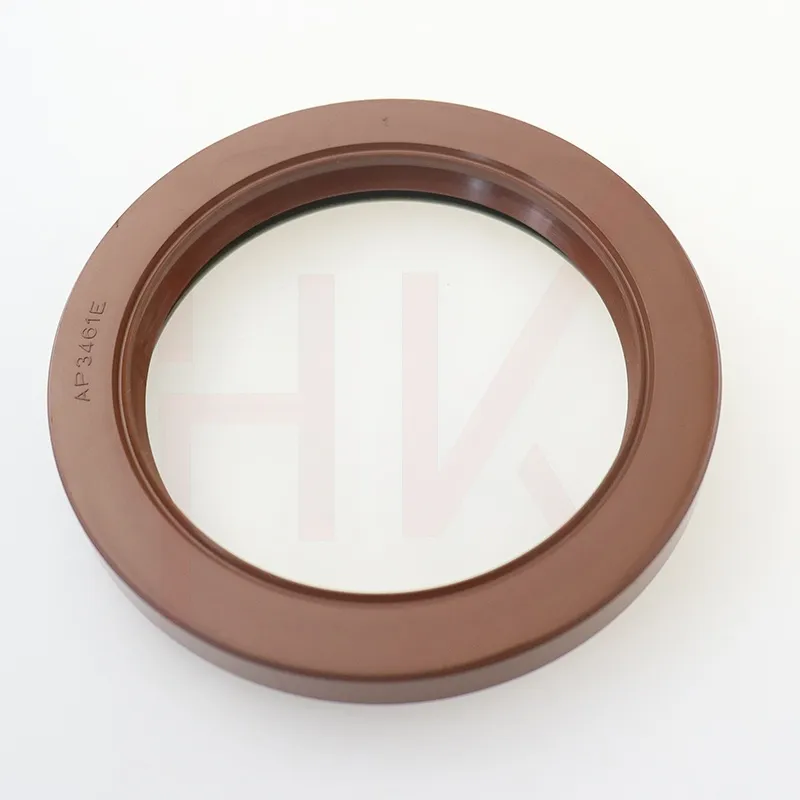Nov . 08, 2024 05:00 Back to list
Understanding Metric Wiper Seals and Their Applications in Various Industries
Understanding Metric Wiper Seals Key Components in Sealing Technology
In the realm of mechanical engineering, the importance of effective sealing solutions cannot be overstated. Among the various types of seals available, wiper seals have gained particular prominence, especially in applications where contamination control is paramount. This article delves into the specifics of metric wiper seals, exploring their design, applications, and significance in modern machinery.
What are Wiper Seals?
Wiper seals are special types of seals designed to prevent the ingress of dirt, dust, and other contaminants from entering into hydraulic or pneumatic systems. They are typically installed on the shaft or rod of a cylinder, functioning as the first line of defense in sealing applications. Unlike traditional seals that are primarily focused on retaining fluids, wiper seals are engineered to provide a ‘wiping’ action, making them particularly effective in keeping contaminants at bay.
The Design of Metric Wiper Seals
Metric wiper seals are specifically designed to fit machinery and components that are measured in metric units. Their design ensures compatibility with a wide range of equipment used in Europe and many other parts of the world that employ the metric measurement system.
Typically, these seals are made from elastomeric materials, which include options such as nitrile, polyurethane, and silicone. The choice of material depends on the application requirements, including factors like temperature resistance, chemical compatibility, and abrasion resistance. The design of metric wiper seals often embodies a lip configuration that allows for efficient wiping and sealing while minimizing friction.
Features of Metric Wiper Seals
1. Contamination Control The primary function of a wiper seal is to prevent foreign particles from entering moving parts, thus extending the life of hydraulic and pneumatic systems. 2. Durability Made from robust materials, metric wiper seals can withstand harsh environments, including exposure to chemicals, high temperatures, and physical wear.
3. Customizable Manufacturers can produce metric wiper seals in various sizes and shapes, making it easy to customize seals for specific applications and machinery requirements.
4. Easy Installation These seals are designed for straightforward installation, which can reduce maintenance downtime.
metric wiper seals

Applications of Metric Wiper Seals
Metric wiper seals are used across a multitude of industries, including
- Automotive In vehicles, they are commonly found in shock absorbers, steering systems, and hydraulic actuators. - Construction Equipment Heavy machinery such as excavators and bulldozers often utilize these seals to protect hydraulic cylinders.
- Aerospace In the aerospace sector, metric wiper seals are essential for preventing contamination in critical hydraulic systems.
- Agricultural Machinery Equipment like tractors and harvesters benefit from these seals to ensure long service life in gritty, demanding environments.
Importance of Proper Selection and Maintenance
Selecting the right metric wiper seal is crucial for optimal performance. Engineers must consider the specific conditions under which the seal will operate, including the types of fluids involved, the potential for exposure to chemicals, and environmental factors like temperature and humidity.
Regular inspection and maintenance of wiper seals are equally important. Signs of wear such as cracks, deformation, or loss of elasticity should be monitored closely, as these can compromise their effectiveness. Schedule maintenance checks to replace worn seals before they lead to larger issues, such as equipment failure or costly repairs.
Conclusion
Metric wiper seals play a vital role in protecting machinery from contamination, ultimately contributing to the efficiency and longevity of hydraulic and pneumatic systems. Their specific design and material make them indispensable in various industrial applications. Understanding the importance of these seals—and ensuring proper selection and maintenance—can lead to improved performance, reduced downtime, and lower operational costs across multiple sectors. As technology continues to advance, the development of more sophisticated sealing solutions will undoubtedly follow, further enhancing the capabilities of metric wiper seals in the future.
-
TCN Oil Seal Metal Ring Reinforcement for Heavy Machinery
NewsJul.25,2025
-
Rotary Lip Seal Spring-Loaded Design for High-Speed Applications
NewsJul.25,2025
-
Hydraulic Cylinder Seals Polyurethane Material for High-Impact Jobs
NewsJul.25,2025
-
High Pressure Oil Seal Polyurethane Coating Wear Resistance
NewsJul.25,2025
-
Dust Proof Seal Double Lip Design for Construction Equipment
NewsJul.25,2025
-
Hub Seal Polyurethane Wear Resistance in Agricultural Vehicles
NewsJul.25,2025
-
The Trans-formative Journey of Wheel Hub Oil Seals
NewsJun.06,2025
Products categories
















